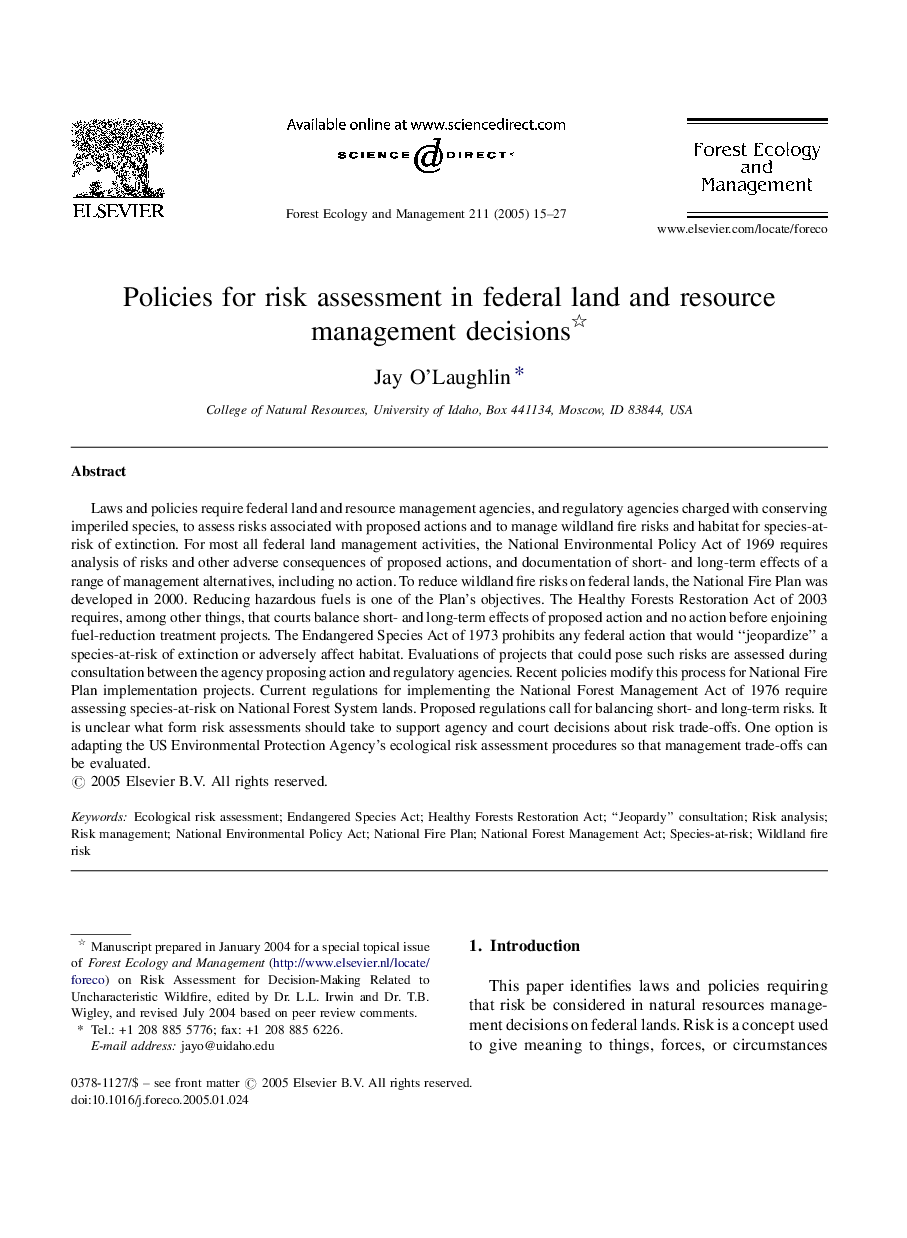| Article ID | Journal | Published Year | Pages | File Type |
|---|---|---|---|---|
| 9620333 | Forest Ecology and Management | 2005 | 13 Pages |
Abstract
Laws and policies require federal land and resource management agencies, and regulatory agencies charged with conserving imperiled species, to assess risks associated with proposed actions and to manage wildland fire risks and habitat for species-at-risk of extinction. For most all federal land management activities, the National Environmental Policy Act of 1969 requires analysis of risks and other adverse consequences of proposed actions, and documentation of short- and long-term effects of a range of management alternatives, including no action. To reduce wildland fire risks on federal lands, the National Fire Plan was developed in 2000. Reducing hazardous fuels is one of the Plan's objectives. The Healthy Forests Restoration Act of 2003 requires, among other things, that courts balance short- and long-term effects of proposed action and no action before enjoining fuel-reduction treatment projects. The Endangered Species Act of 1973 prohibits any federal action that would “jeopardize” a species-at-risk of extinction or adversely affect habitat. Evaluations of projects that could pose such risks are assessed during consultation between the agency proposing action and regulatory agencies. Recent policies modify this process for National Fire Plan implementation projects. Current regulations for implementing the National Forest Management Act of 1976 require assessing species-at-risk on National Forest System lands. Proposed regulations call for balancing short- and long-term risks. It is unclear what form risk assessments should take to support agency and court decisions about risk trade-offs. One option is adapting the US Environmental Protection Agency's ecological risk assessment procedures so that management trade-offs can be evaluated.
Keywords
Related Topics
Life Sciences
Agricultural and Biological Sciences
Ecology, Evolution, Behavior and Systematics
Authors
Jay O'Laughlin,
